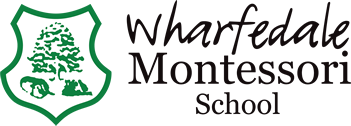The return to school after the long summer holidays always carries a mixture of anticipation and excitement. For children in a Montessori environment, this transition feels less like stepping back into a place of rigid routines and more like rejoining a community where learning and relationships flourish hand in hand. I would like to think that Wharfedale offers not only an academic environment but also a relaxed social space, where children and adults alike find joy in reconnecting, sharing stories, and rediscovering the rhythm of daily life together.
One of the beautiful aspects of Montessori education is the way community is nurtured. After weeks apart, children return to classrooms where friendships pick up with ease, often as though no time has passed. Younger children are welcomed by their older peers, who remember what it felt like to be new and offer support in practical and gentle ways. Teachers guide with warmth, creating an atmosphere where each child feels secure, seen, and valued. This sense of belonging is the foundation upon which meaningful learning is built.
For many children, coming back to school also means embracing the joy of a familiar environment. The classroom is carefully prepared to invite exploration: shelves filled with materials, spaces for quiet reflection, and areas for collaboration. It is a space where curiosity is celebrated and individuality is honoured. Returning to this environment after the less structured days of summer holidays gives children a sense of continuity and comfort—they know where things belong, they know what to expect, and yet each day still holds the promise of discovery. Even though we have made some changes to the environment, these are small compared to the continuity the classrooms provide.
At the same time, the return to school signals fresh beginnings. Some children step into a Montessori classroom for the first time, while others move up to a new level. Meeting new schoolmates adds a layer of excitement, as friendships form and the group begins to knit together. There is a palpable energy in these early weeks: a blend of the familiar and the unknown, of routines re-established and new opportunities unfolding. This balance helps children approach change with courage and optimism, confident in the support of their community.
Academically, Montessori education offers another gift to returning students: the spiral curriculum. In this approach, subjects are not taught in isolation or only once, but are revisited year after year with increasing depth and complexity. A child may encounter the concept of the solar system at a young age through stories and pictures, then revisit it later with more advanced scientific detail, and eventually explore astronomy in a much broader context. Each return adds layers of understanding, allowing children to build upon their knowledge naturally and meaningfully.
This cyclical way of learning mirrors the rhythm of returning to school each year. Just as friendships and routines are renewed, so too are the subjects of study. Each child brings with them the experiences and growth of the past year, and these shape the way they engage with familiar topics in new ways. The spiral curriculum acknowledges that learning is not linear but expansive, giving children the chance to deepen their curiosity and stretch their abilities in ways that feel both challenging and joyful.
As the new school year begins, parents and teachers often remark on how quickly children seem to settle. Within days, laughter fills the classrooms and playgrounds, and children are once again immersed in purposeful work and play. This ease of transition is no accident—it reflects the carefully cultivated environment of Montessori education, where relationships, routines, and respect create the conditions for children to thrive.
Returning to school after summer is not simply about resuming academic lessons. In our setting, it is about rejoining a living, breathing community that values each child’s journey. It is about celebrating the joy of familiar faces and welcoming new ones. It is about revisiting ideas with fresh eyes, confident that learning is an unfolding process. And most of all, it is about embracing the excitement of the unknown—the discoveries, friendships, and growth that await in the year ahead.
